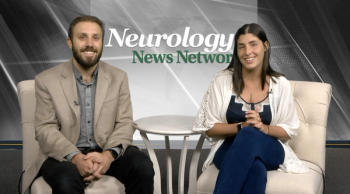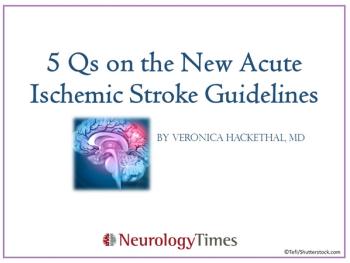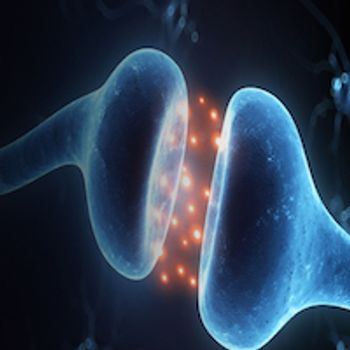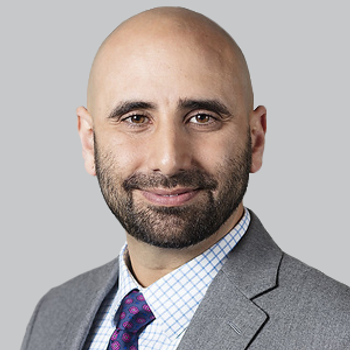
With a phase I trial of the therapy underway, EHP-101 is one step closer to potentially showing an effect on the pathology of multiple sclerosis.

With a phase I trial of the therapy underway, EHP-101 is one step closer to potentially showing an effect on the pathology of multiple sclerosis.

The medical coordinator of the Multidisciplinary Sleep-Wake Disorders Center at Antwerp University Hospital spoke about how to address some of the issues faced in OSA treatment development.

The pediatric neurologist discussed the importance of the recent FDA approval of perampanel in pediatrics with partial-onset seizures with or without secondarily generalized seizures.

In a small trial, the AAVrh74.MHCK7.micro-dystrophin therapy has shown high levels of transduced micro-dystrophin expression.

Neurology News Network for the week of October 6, 2018.

The majority of relapses were treated in an outpatient setting, and that the rate of outpatient relapses very sharply declined during pregnancy.

Although the history of developments in Alzheimer has been littered with failures, there remains reason to be hopeful about the future.

The identification of the subtypes allows future studies to target homogeneous subtype samples, resolve inconsistencies, personalize treatment and utilize preventive interventions.

When should aspirin be given in patients with acute ischemic stroke? Plus 4 other questions to test your knowledge of the new guidelines.

Based on the findings in this early phase, Emerald Health expects to start phase II trials in both MS and scleroderma.

Results presented at the 2018 American Headache Society Annual Scientific Meeting suggested that 20% of participants achieved pain freedom two hours after a single dose of rimegepant, and 48% achieved pain freedom eight hours after that dose, compared to 12% and 32%, respectively, with placebo.

The restless leg syndrome expert spoke about the commonality of both pediatric and adult patients oftentimes misdiagnosed or undiagnosed with RLS.

Proof-of-concept studies using a targeted phenotypic approach to reduce obstructive sleep apnea severity are showing exciting results.

A new analysis of more than a dozen clinical trials has shown no increase in stroke risk for patients with MS, who have shown a higher risk than the general population.

Digital medicine is used to increase access for rural and underserved areas, allowing for the delivery of patient care, patient monitoring and specialist consultations.

Although the differences between groups were not statistically significant, combined findings have shown a risk reduced by close to half.

The identification of 3 key non-anatomical contributors to OSA has unlocked new potential pharmacotherapies, a major advance for the field.

Silberstein spoke about the high prevalence of individuals with migraine in the United States, adding that the major problem in the space today is the lack of resources.

The results suggest that early use of donepezil may be efficacious against cognitive decline but not for the prophylaxis of psychosis.

A 67-year-old woman comes to the urgent care because she fell in the shower three days ago. She insists that she doesn’t have any symptoms and she says her fall resulted from a slip on soap.

When physicians can’t rid patients of their disease, it’s important to remember that they can still help patients live well with it.

Almost 45% of those who received an antidementia treatment experienced the never event of co-administration of a high-potency anticholinergic medication and an acetylcholinesterase inhibitor.

Recent research has identified novel potential pathophysiological mechanisms that could potentially serve to subclassify various phenotypes in obstructive sleep apnea.

The actimetry-based method allows for easily quantifiable sleep dynamics in real life context, enabling large-scale clinical studies to investigate the complex temporal dynamics of sleep.

Lanctôt advised ruling out any possible underlying medical conditions that could be causing it, including pain, as well as starting with any non-pharmacologic interventions.

Long-term maintenance of efficacy was demonstrated with solriamfetol for treatment of excessive sleepiness with narcolepsy or obstructive sleep apnea.

Neurology News Network for the week of September 28, 2018.

Safety data for pediatrics was consistent with the safety profile in adult populations, without the need for weight-based dosing.

The Carl F. Asseff Professor of Ophthalmology and the Director of the Visual Sciences Research Center at Case Western Reserve University spoke about the beginnings of her work with efavirenz.

An independent investigation out of UC San Diego has found no statistically significant evidence showing a higher risk of mortality with the therapy compared to quetiapine or combination therapy.